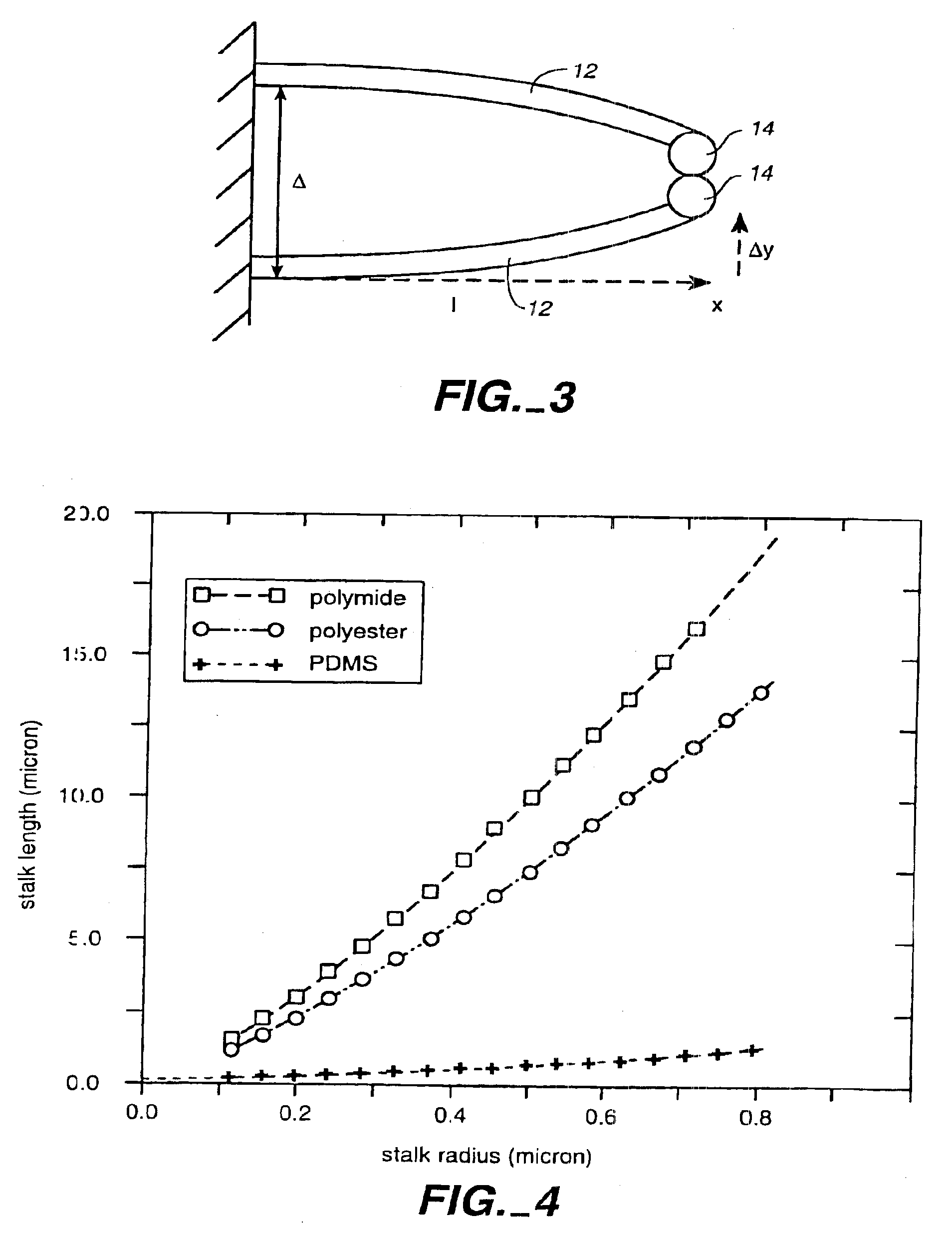Adhesive microstructure and method of forming same
a microstructure and adhesive technology, applied in the field of adhesive microstructure and adhesive forming method, can solve the problems of unexplored or fully understood adhesive mechanisms in nature, and achieve the effect of improving adhesion to rough surfaces and being easy to disengag
- Summary
- Abstract
- Description
- Claims
- Application Information
AI Technical Summary
Benefits of technology
Problems solved by technology
Method used
Image
Examples
Embodiment Construction
The invention is directed toward the use of microfabricated structures to achieve adhesion. In particular, the invention uses a fabricated seta-like structure. As shown in FIGS. 1A and 1B, a seta-like structure 10 includes a stalk 12. Positioned at an end of the member or stalk 12 is a spatula or protrusion 14. An array of spatulae or protrusions may also be located at the end of the stalk. The stalk supports the spatula, or an array of spatulae, at an oblique angle (neither perpendicular nor parallel) relative to a supporting surface 16. This angle may be between about 15 and 75 degrees (°), and more preferably between about 30° and 60°. This angle, in one embodiment, is 30°.
The supporting surface 16, for instance, may be a shaft or substrate. As shown in FIGS. 1A and 1B, the supporting surface 16 is a flexible or compliant substrate. This substrate may be made from such materials as polymers, for example, polyester, polyurethane and polyimide.
Ideally, each spatula 14 or each spatu...
PUM
| Property | Measurement | Unit |
|---|---|---|
| Angle | aaaaa | aaaaa |
| Angle | aaaaa | aaaaa |
| Angle | aaaaa | aaaaa |
Abstract
Description
Claims
Application Information
 Login to View More
Login to View More - R&D
- Intellectual Property
- Life Sciences
- Materials
- Tech Scout
- Unparalleled Data Quality
- Higher Quality Content
- 60% Fewer Hallucinations
Browse by: Latest US Patents, China's latest patents, Technical Efficacy Thesaurus, Application Domain, Technology Topic, Popular Technical Reports.
© 2025 PatSnap. All rights reserved.Legal|Privacy policy|Modern Slavery Act Transparency Statement|Sitemap|About US| Contact US: help@patsnap.com



